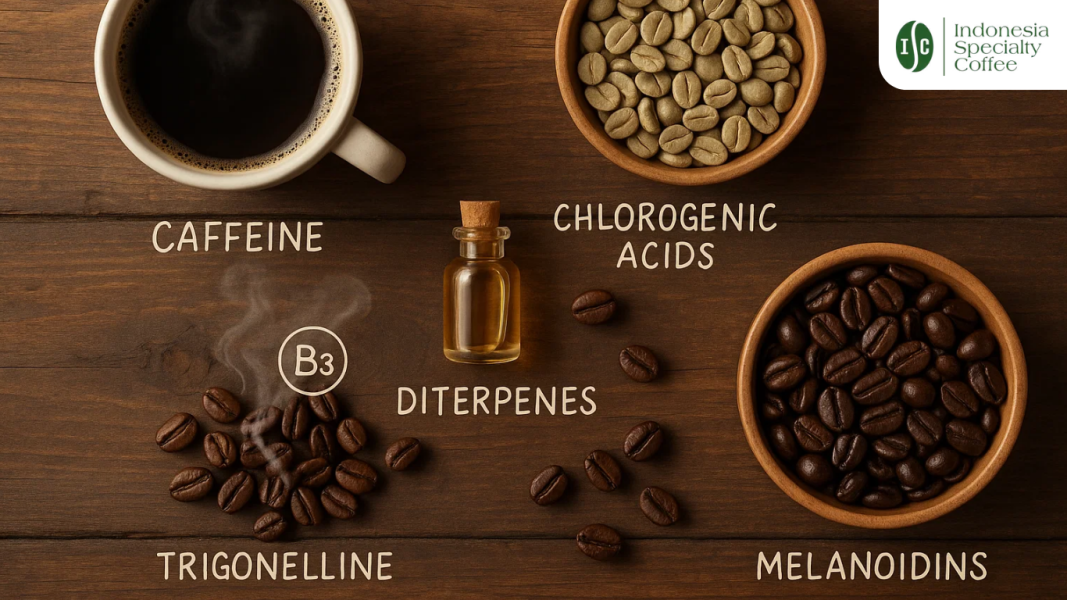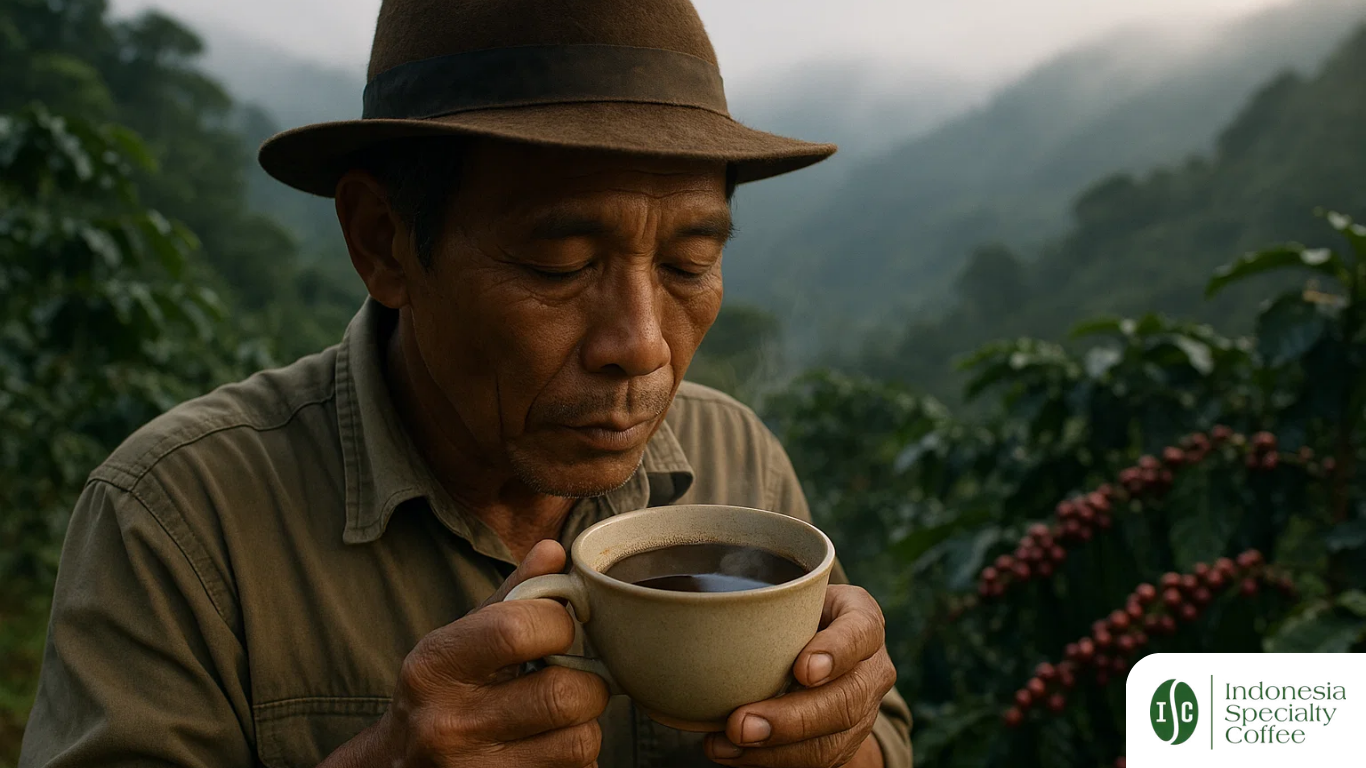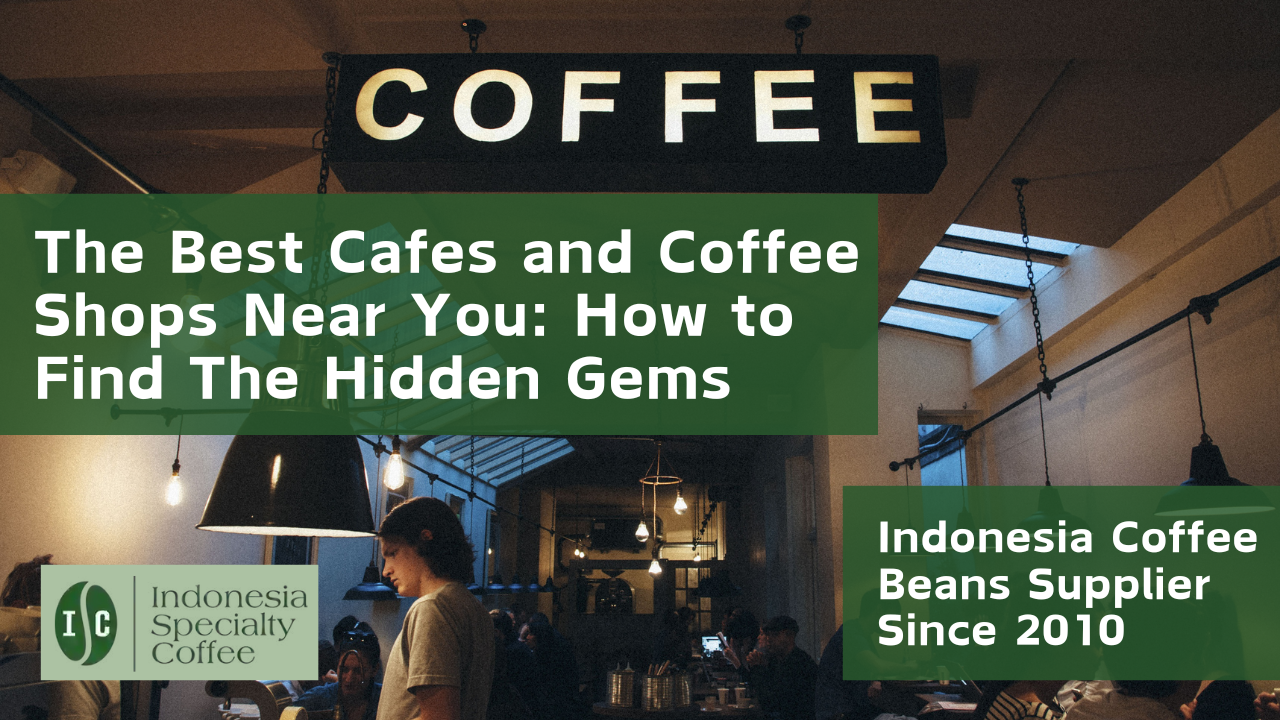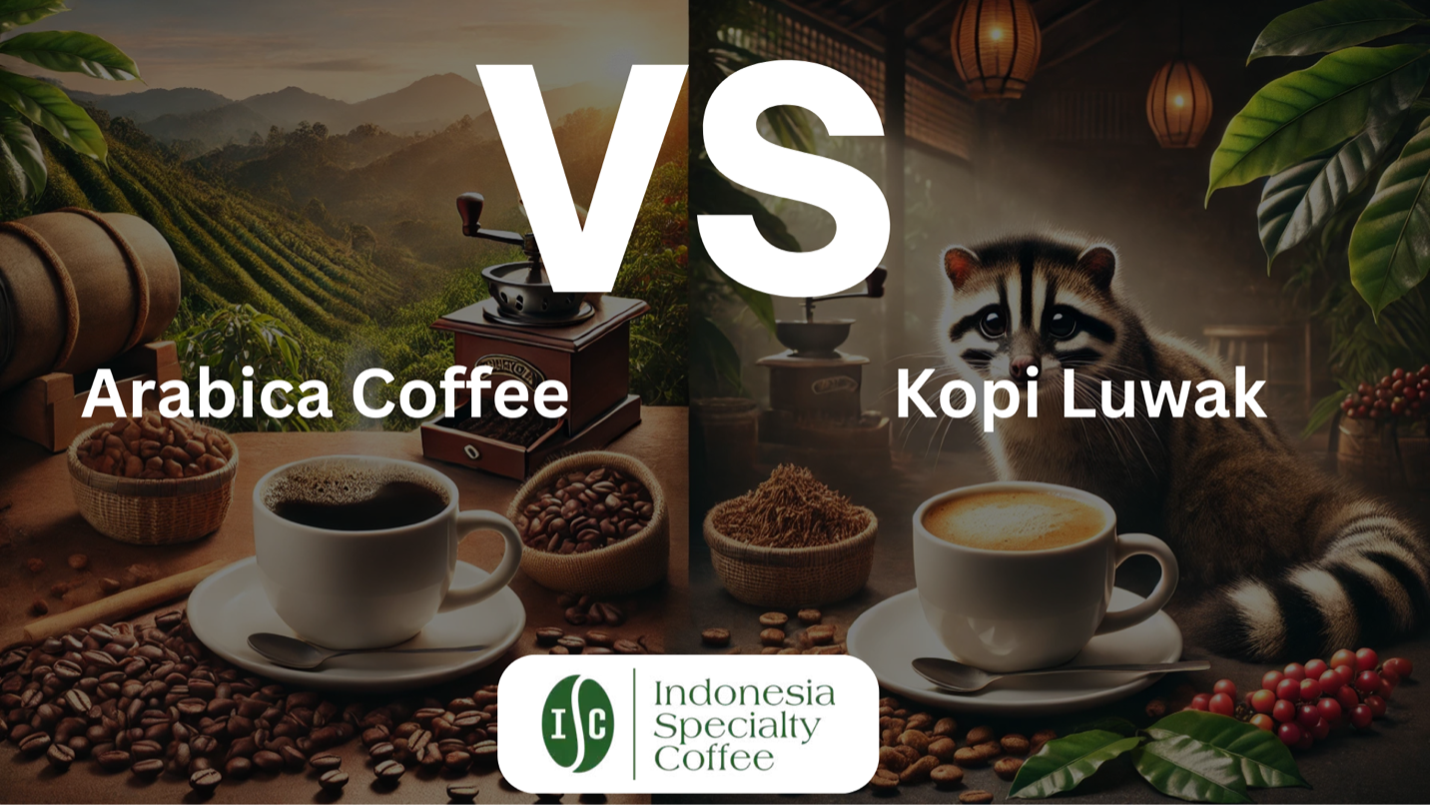Coffee is more than a flavorful beverage — it’s a complex mixture of bioactive compounds that offer both taste and health benefits. Whether you enjoy a bold Mandheling, a floral Toraja, or a rich espresso blend, these compounds shape your coffee experience beyond the aroma.
Let’s break down five of the most important bioactive compounds found in coffee and how they contribute to flavor, health, and the unique character of specialty brews.
1. Caffeine – Energy, Focus, and Flavor Foundation
Caffeine is perhaps the best-known compound in coffee. As a natural stimulant, it activates the central nervous system and helps improve alertness, endurance, and mood.
Health Benefits:
- Enhances focus and physical performance
- May reduce the risk of neurodegenerative diseases like Alzheimer’s and Parkinson’s
- Boosts metabolic rate and fat oxidation
Coffee’s caffeine content can vary depending on bean type and origin — with Arabica beans (common in Indonesia) generally lower in caffeine than Robusta.
Learn how Indonesian coffee stands out in global comparisons in Vietnamese Coffee vs Indonesian Coffee
2. Chlorogenic Acids (CGA) – Natural Antioxidants
Chlorogenic acids are powerful polyphenols found in high levels in green coffee beans. These compounds are responsible for coffee’s antioxidant activity and mild acidity, particularly in single origin or lightly roasted beans.
Health Benefits:
- Support cardiovascular health
- Help regulate blood sugar levels and may reduce type 2 diabetes risk
- Offer anti-inflammatory effects
Roasting reduces CGA, so light-to-medium roasts tend to retain more. Indonesia’s diverse regions produce beans with varying CGA profiles, especially in places like Sumatra and Flores.
Explore Sumatra’s unique offerings in Café de Sumatra
3. Diterpenes – Cafestol & Kahweol
These oil-based compounds are present in unfiltered coffee, like French press or Turkish-style brews. While they’re less common in paper-filtered coffee, they play a role in aroma and offer unique health properties.
Health Benefits:
- Anti-inflammatory and anti-cancer potential
- May support liver health
Caution: Diterpenes can raise LDL (bad) cholesterol if consumed in high amounts via unfiltered brews.
Learn about how roasting methods and preparation styles affect your coffee’s profile in Tostar café indonesio: Guía completa
4. Trigonelline – Precursor to Vitamin B3
Trigonelline is an alkaloid found in raw coffee beans that converts into niacin (vitamin B3) during roasting. It contributes to coffee’s signature aroma and has antibacterial effects.
Health Benefits:
- Supports brain function and nerve health
- May help prevent cavities by reducing bacterial adhesion
- Has potential anti-diabetic properties
Read more about bean flavor development en Sumatra Mandheling Green Coffee Beans: A Unique Flavor Profile
5. Melanoidins – From Roast to Health Boost
Melanoidins are large molecules formed during the Maillard reaction (the chemical reaction responsible for browning) during roasting. They contribute to the rich brown color, body, and depth in coffee, especially dark roasts.
Health Benefits:
- Antioxidant and anti-inflammatory properties
- Prebiotic effects that support healthy gut microbiota
- Act as dietary fiber
These compounds are most present in well-roasted beans, making roast level a key part of coffee’s health profile.
Curious how roast level compares across styles? Explore Espresso vs Dark Roast Coffee Beans
Coffee as a Functional Beverage
From the floral tones of Toraja to the earthy richness of Mandheling, Indonesia’s specialty coffee varieties are packed with more than just flavor — they’re brimming with health-promoting compounds. Each origin, process, and roast brings out a different balance of bioactives.
Whether you’re tasting a Sumatra Peaberry or savoring a blend made for espresso, these natural compounds help define coffee’s complex personality.
Want to compare single origin to blends? Visit Single Origin vs Blend: What’s the Difference?
Final Sip
The bioactive compounds in coffee — caffeine, chlorogenic acids, diterpenes, trigonelline, and melanoidins — are what make every cup a functional drink, delivering both sensory and wellness benefits. Understanding them deepens your appreciation of each origin and roast profile.
Indonesia’s specialty coffee scene is rich in diversity, and these compounds are the silent heroes behind its global reputation.
Begin your flavor journey with Exploring the World of Specialty Brews and Single Origin Coffees








